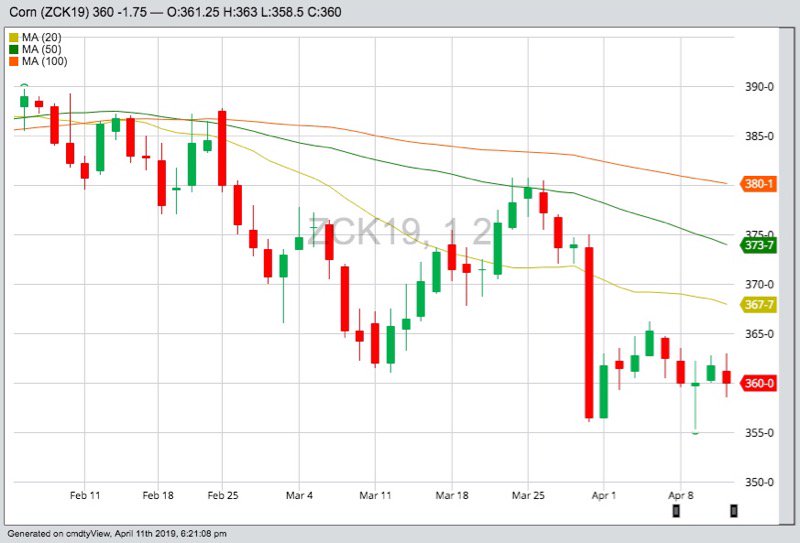Chicago | Reuters — U.S. soybean and corn futures fell on Thursday on disappointing weekly export sales data and expectations of large South American harvests that should dampen U.S. export prospects, analysts said.
Wheat futures were higher on short-covering after a five-session slide and worries that wintry weather in the Dakotas will curb plantings of spring wheat.
Chicago Board of Trade May soybean futures settled down 6-3/4 cents at $8.95-1/4 per bushel and May corn ended down 1-3/4 cents at $3.60 a bushel (all figures US$). CBOT May wheat finished up 2-1/2 cents at $4.60-1/2 a bushel.
Read Also

U.S. grains: CBOT soybeans, corn, wheat fall in USDA data aftermath
Chicago grains took a dive on Friday, following a closely watched U.S. government crop report and the release of export data that could provide clues into Chinese buying.
Soybeans fell after the U.S. Department of Agriculture reported export sales of U.S. soybeans in the week to April 4 at 280,400 tonnes, well below a range of trade expectations.
Corn export sales, at 548,000 tonnes, also fell below expectations.
“The soybeans are reacting to a really lousy export sales number,” said Matt Connelly, analyst at the Hightower Report in Chicago, adding that USDA’s weekly report showed no sales to China and cancellations of soy sales totaling 99,300 tonnes.
Traders were also mindful of large harvests projected from South America. Argentina’s Rosario grains exchange on Wednesday raised its forecast of the Argentine soy crop to 56 million tonnes, up two million from its previous figure, and Conab, Brazil’s agricultural statistics and food supply agency, on Thursday raised its estimates of the country’s soy and corn harvests.
Meanwhile, a blizzard pounding South Dakota and Minnesota, two major U.S. corn states, threatened to delay spring planting and prompt farmers to switch some acres from corn to soybeans, which can be planted later in the season.
“You are probably going to see plantings shift a little bit because of all this snow and moisture. People are saying bean acres have to go up,” Connelly said.
Despite the potential for smaller corn plantings, CBOT corn futures remained under pressure following USDA’s larger-than-expected March quarterly stocks figure and 2018-19 corn ending stocks forecast.
“We can lose two million corn acres and still be OK,” Connelly said.
CBOT wheat firmed as traders considered the impact of this week’s blizzard on spring wheat planting, which is already off to a slow start in the Dakotas. USDA this week said spring planting was one per cent complete, lagging the five-year average of five per cent, and nothing had been seeded in North Dakota, the biggest spring wheat producer.
CBOT May wheat was primed for a rebound after closing lower in each of the previous five sessions. Commodity funds hold a sizable net short position in CBOT wheat, leaving the market vulnerable to bouts of short-covering.
— Julie Ingwersen is a Reuters commodities correspondent in Chicago; additional reporting by Gus Trompiz in Paris and Naveen Thukral in Singapore.













